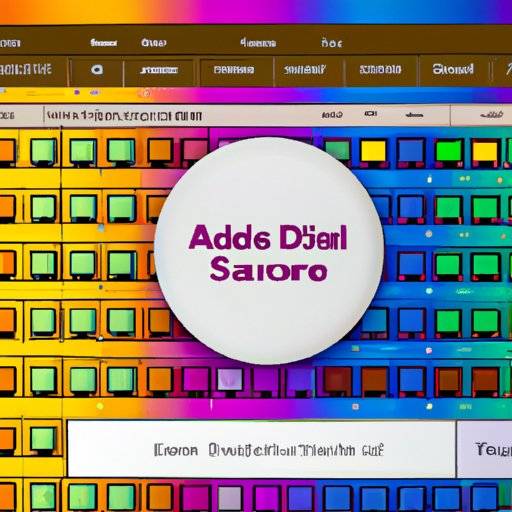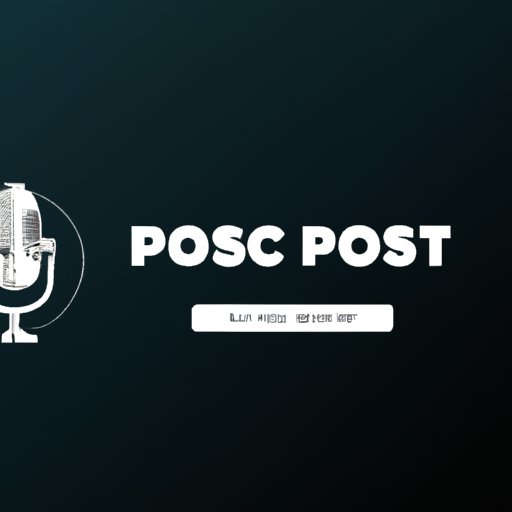Introduction
A podcast is an audio file that is typically available for streaming or download. It can be a single episode or a series of episodes related to a particular topic that listeners can subscribe to. Podcasts have become increasingly popular in recent years and are a great way to share your thoughts and opinions with the world.
Starting a podcast can seem like a daunting task, but it doesn’t have to be. With a bit of research, planning, and effort, anyone can create a successful podcast. In this article, we’ll go over the steps you need to take to get your podcast up and running.
Research Your Niche and Identify Your Target Audience
Before you start creating your podcast, it’s important to do some research. You need to identify your niche and target audience so that you can tailor your content to them. By doing this, you’ll be able to attract more listeners and keep them engaged.
Identify Your Niche
The first step is to identify your niche. What topics will you cover in your podcast? Are there any specific issues or themes that you want to focus on? Think about the type of content you want to create and make sure it’s something that people will be interested in.
Identify Your Target Audience
Once you’ve identified your niche, it’s time to identify your target audience. Who do you want to reach with your podcast? Are they a specific age group or gender? Do they have certain interests or hobbies? Knowing who your target audience is will help you create content that resonates with them.

Set Goals for Your Podcast
Once you’ve identified your niche and target audience, it’s time to set some goals for your podcast. Goals will help you stay focused and motivated as you work on creating your podcast.
Define Your Goals
Think about what you want to achieve with your podcast. Do you want to raise awareness about a certain issue? Do you want to entertain and inform your listeners? Or maybe you just want to have fun and connect with others. Whatever your goals are, make sure they’re realistic and achievable.
Set Reasonable Expectations
It’s important to set realistic expectations for yourself. Don’t expect your podcast to be an overnight success. It may take some time to build an audience and establish yourself as an authority in your niche. Be patient and don’t give up if you don’t see immediate results.

Choose a Format and Structure
Now that you’ve done your research and set your goals, it’s time to decide on a format and structure for your podcast. This will help you stay organized and ensure that your podcast runs smoothly.
Decide on Length and Frequency
How long should each episode be? Will you release new episodes weekly, bi-weekly, or monthly? These are important questions to consider when deciding on the length and frequency of your podcast. Consider your audience and how much time they’re willing to dedicate to listening to your podcast.
Establish a Regular Schedule
Once you’ve decided on the length and frequency of your podcast, it’s time to establish a regular schedule. Creating a schedule will help you stay organized and ensure that you’re releasing new episodes on a consistent basis. Try to stick to your schedule as much as possible so that your audience knows when to expect new content.
Create a Recording Setup
Now it’s time to create the actual podcast. You’ll need to set up a recording setup that will allow you to record your podcast episodes. Here are some tips for setting up your recording setup.
Find a Quiet Space
Find a quiet space where you can record your podcast without interruption. This could be a spare room in your home or even a closet. Make sure the space is free from distractions and background noise so that your listeners can hear you clearly.
Purchase Quality Equipment
You’ll need to purchase quality equipment such as a microphone, headphones, and audio interface. Investing in good equipment will ensure that your podcast sounds professional and of high quality. Research different brands and models to find the best equipment for your needs.

Select Your Audio Editing Software
Once you’ve set up your recording setup, it’s time to select your audio editing software. There are many different programs available, so take the time to compare features and prices before making a decision.
Determine Your Needs
Think about what you need from your audio editing software. Do you need basic features such as trimming, fading, and equalization? Or do you need more advanced functions such as multi-track recording and noise reduction? Once you know what you need, you’ll be able to narrow down your options.
Compare Features and Prices
Take the time to compare the features and prices of different audio editing software. Look for programs that offer the features you need at an affordable price. Read reviews and ask other podcasters for their recommendations.
Select Your Hosting Platform
Once you’ve selected your audio editing software, it’s time to select a hosting platform for your podcast. Your hosting platform will store your podcast episodes and make them available for streaming and download.
Consider Your Budget
When selecting a hosting platform, consider your budget. Many hosting platforms offer free plans, but these usually come with limited features. If you want more advanced features, you may need to pay a monthly fee.
Consider Your Distribution Requirements
Your hosting platform should also be able to distribute your podcast to different platforms such as iTunes and Spotify. Make sure the hosting platform you choose has the ability to do this.
Promote Your Podcast
Once your podcast is up and running, it’s time to promote it. Promoting your podcast will help you reach more listeners and grow your audience. Here are some tips for promoting your podcast.
Utilize Social Media
Social media is a great way to promote your podcast. Create accounts on different social media platforms and use them to post updates about your podcast. Share links to your podcast episodes and engage with other users to spread the word about your podcast.
Participate in Podcast Networks
Another way to promote your podcast is by joining podcast networks. Podcast networks are aggregators that list and promote podcasts in different categories. Joining a podcast network will help you reach a wider audience and gain more exposure for your podcast.
Conclusion
Starting a podcast can be a rewarding experience. With a bit of research, planning, and effort, you can create a successful podcast that reaches a wide audience. Follow the steps outlined in this article and you’ll be well on your way to launching your own podcast.
(Note: Is this article not meeting your expectations? Do you have knowledge or insights to share? Unlock new opportunities and expand your reach by joining our authors team. Click Registration to join us and share your expertise with our readers.)
